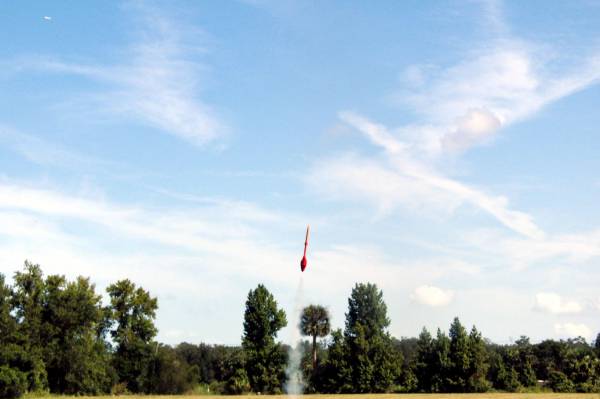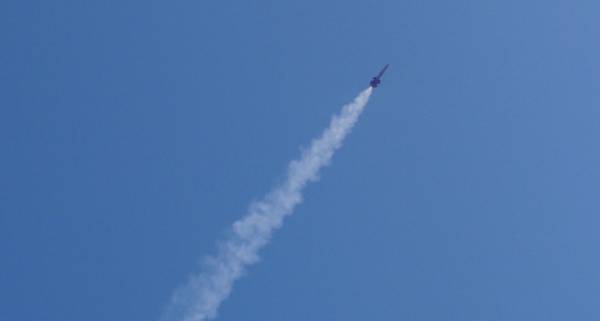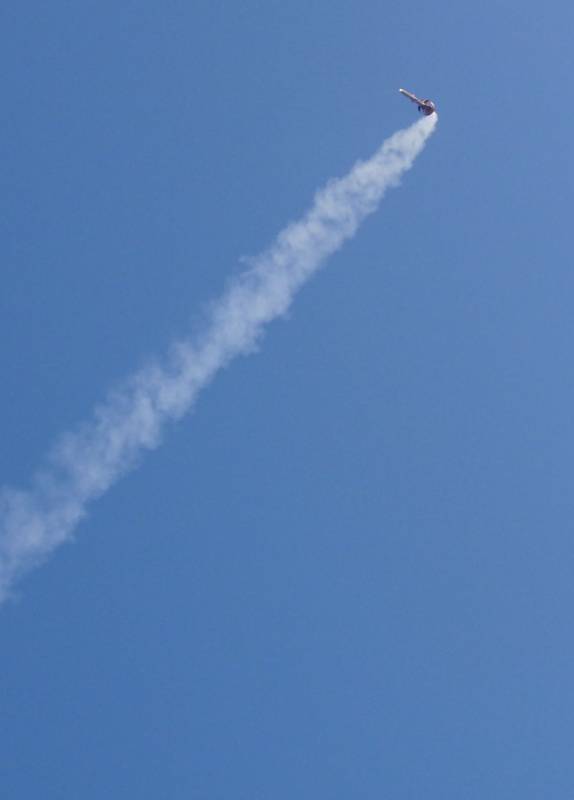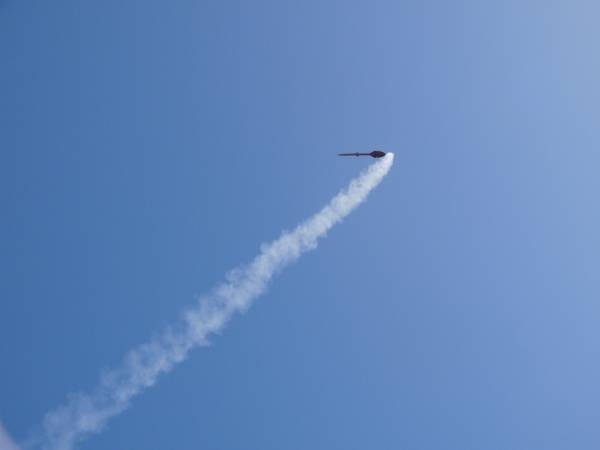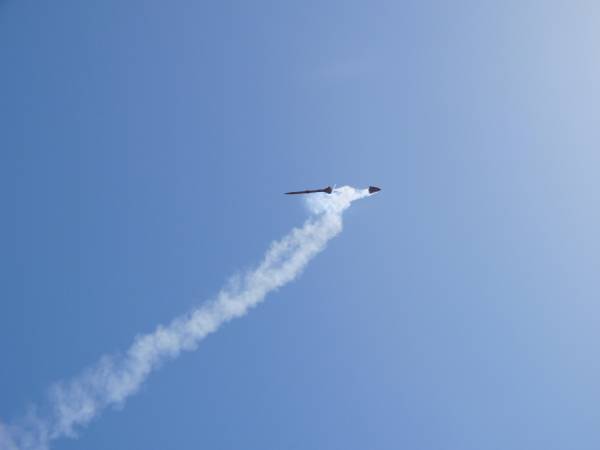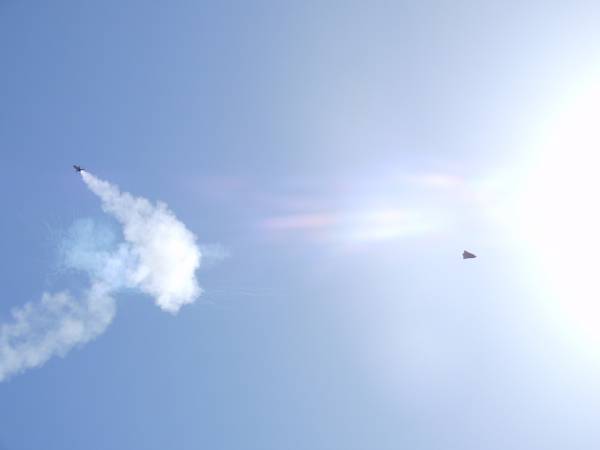- Joined
- Jan 18, 2009
- Messages
- 5,937
- Reaction score
- 579
At yesterday's ROCK launch, something rather odd happened which I caught in a series of photographs.
A two-stage Estes Solar Flare made the first flight of the day.
The launch looked good.
The first part of the flight was nominal with the rocket making a slight arc as it soared skyward.
Just as the first-stage motor burned out, the rocket took a sharp turn.
It headed off to the left.
Then second stage fired.
And the two stages shot off in opposite directions.
The upper-stage did a little skywriting before straightening out and heading for the horizon.
Additional photos of the above flight and the ROCK launch are in the RocketReviews.com Photo Album.
-- Roger
A two-stage Estes Solar Flare made the first flight of the day.
The launch looked good.
The first part of the flight was nominal with the rocket making a slight arc as it soared skyward.
Just as the first-stage motor burned out, the rocket took a sharp turn.
It headed off to the left.
Then second stage fired.
And the two stages shot off in opposite directions.
The upper-stage did a little skywriting before straightening out and heading for the horizon.
Additional photos of the above flight and the ROCK launch are in the RocketReviews.com Photo Album.
-- Roger
Last edited:





